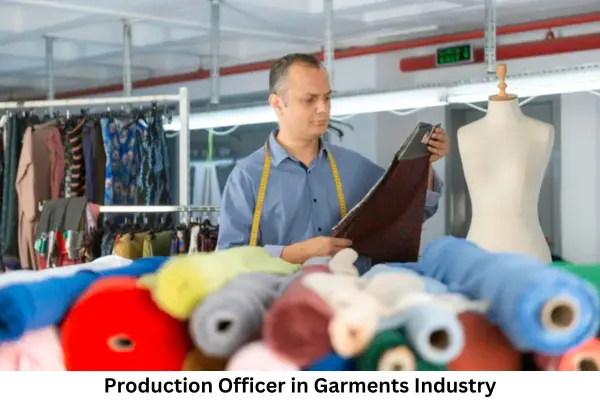The Production Officer ensures the smooth and efficient operation of the production process. The Production Officer is responsible for managing various aspects of the production line to meet production targets, maintain quality standards, and ensure worker safety. Here are some of the key responsibilities of a Production Officer in a garment factory:
Table of Contents
1. Production Planning:

Collaborate with the production manager to plan and schedule production activities based on order quantities, delivery deadlines, and available resources.
2. Quality Control:
Monitor the production process to ensure that garments meet the required quality standards and specifications set by the buyers.
3. Workforce Management:
Oversee and coordinate the work of production line workers, assigning tasks, and ensuring that the workforce is adequately trained and following standard operating procedures.
4. Production Monitoring:
Continuously monitor the production line to identify and address any issues arising during manufacturing, such as machine breakdowns or material shortages.
5. Material Management:
Coordinate with the sourcing and warehouse departments to ensure an adequate supply of raw materials and accessories for production.
6. Cost Management:
Work to minimize production costs by optimizing resource utilization and reducing waste during production.
7. Health and Safety Compliance:
Ensure that all safety guidelines and regulations are followed by production workers to maintain a safe working environment.
8. Reporting:
Prepare production reports, including productivity, efficiency, and quality data, to present to management regularly.
9. Process Improvement:
Identify areas of improvement in the production process and implement strategies to enhance productivity and efficiency.
10. Communication:
Facilitate effective communication between different departments, such as design, merchandising, and quality assurance, to ensure a smooth workflow.
11. Time and Action (T&A) Management:
Adhere to the time and action plan to meet production deadlines and delivery schedules.
12. Compliance:
Ensure that the factory complies with all relevant labor laws, safety standards, and buyer-specific requirements.
13. Training and Development:
Provide training to production workers on new techniques, equipment, and procedures as required.
14. Problem Solving:
Address and resolve any production-related issues or disputes that may arise during the manufacturing process.
15. Environmental Sustainability:
Encourage and implement environmentally friendly production practices to minimize the factory’s impact on the environment.
